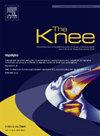Anatomical variability in the quadriceps tendon: structural layering and patellar insertion patterns
IF 2
4区 医学
Q3 ORTHOPEDICS
引用次数: 0
Abstract
Purpose
The quadriceps tendon is a complex anatomical structure that is crucially involved in knee stability and extension by transmitting forces from the quadriceps muscles to the patella. This study investigated anatomical variability in the quadriceps tendon of elderly Korean cadavers, focusing on the structural layering and muscle contributions at its patellar insertion.
Methods
Sixty-three quadriceps tendon specimens from 35 Korean cadavers were dissected to assess the composition and arrangement of the rectus femoris (RF), vastus medialis (VM), vastus lateralis (VL), and vastus intermedius (VI).
Results
The quadriceps tendon configurations were categorized into four distinct types based on the pattern of muscle layering: Type 1, a trilaminar structure with the RF as the superficial layer, the VM and VL combined as the middle layer, and the VI as the deepest layer (8/20, 40 %); Type 2, a multilayered arrangement with RF insertions merging with the VM and VL (8/20, 40 %); Type 3, comprising the RF, VL, and VI, with no contribution from the VM (3/20, 15 %); and Type 4, consisting solely of the RF and VI (1/20, 5 %). In terms of tendon ratios, the combined vastus muscles (VM + VL) were 1–3 times larger than the RF and VI in 50 of 63 specimens, while 12 specimens displayed ratios as high as 4–6 times.
Conclusion
These data suggest that adjusted approaches that account for individual anatomical differences may improve outcomes in surgical procedures involving the knee.
股四头肌肌腱的解剖变异:结构分层和髌骨止点模式。
目的:股四头肌肌腱是一种复杂的解剖结构,通过将力量从股四头肌传递到髌骨,对膝关节的稳定和伸展起着至关重要的作用。本研究研究了韩国老年尸体的股四头肌肌腱的解剖学变异,重点研究了其髌骨止点的结构分层和肌肉贡献。方法:解剖35具韩国尸体的63份股四头肌肌腱标本,评估股直肌(RF)、股内侧肌(VM)、股外侧肌(VL)和股中间肌(VI)的组成和排列。结果:股四头肌肌腱构型根据肌肉分层模式可分为四种不同的类型:1型,以RF为浅层,VM和VL结合为中间层,VI为最深层的三层结构(8/ 20,40 %);类型2,射频插入与VM和VL合并的多层排列(8/ 20,40 %);类型3,包括RF, VL和VI,没有VM的贡献(3/ 20,15 %);类型4,仅由RF和VI组成(1/ 20,5 %)。在肌腱比值方面,63例标本中有50例合并股肌(VM + VL)比RF和VI大1-3倍,12例标本的比值高达4-6倍。结论:这些数据表明,考虑到个体解剖差异的调整入路可能会改善涉及膝关节的外科手术的结果。
本文章由计算机程序翻译,如有差异,请以英文原文为准。
求助全文
约1分钟内获得全文
求助全文
来源期刊

Knee
医学-外科
CiteScore
3.80
自引率
5.30%
发文量
171
审稿时长
6 months
期刊介绍:
The Knee is an international journal publishing studies on the clinical treatment and fundamental biomechanical characteristics of this joint. The aim of the journal is to provide a vehicle relevant to surgeons, biomedical engineers, imaging specialists, materials scientists, rehabilitation personnel and all those with an interest in the knee.
The topics covered include, but are not limited to:
• Anatomy, physiology, morphology and biochemistry;
• Biomechanical studies;
• Advances in the development of prosthetic, orthotic and augmentation devices;
• Imaging and diagnostic techniques;
• Pathology;
• Trauma;
• Surgery;
• Rehabilitation.
 求助内容:
求助内容: 应助结果提醒方式:
应助结果提醒方式:


